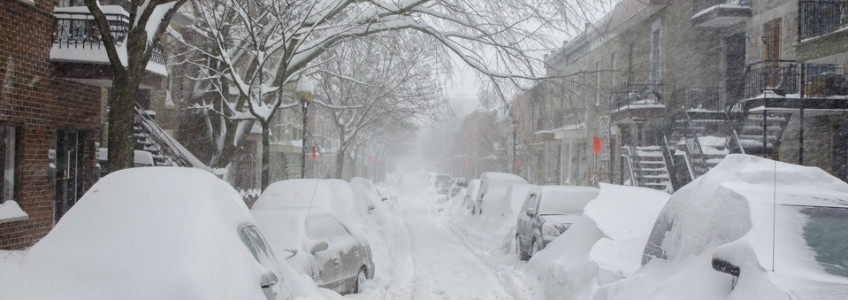
The temperature drops, snow piles up, and the wind is howling. It’s winter in the Northern Midwest. While this weather would force other parts of the country to grind to a halt, the hardy Midwesterners press on to keep the local economy churning.
We keep building, respond to utility emergencies, and even play outdoors, and often these activities require security in place to discourage theft and prevent injury of passers-by. I mean, of course, we need temporary fences.
Can you install temporary fences in winter?
The short answer is “yes.” Our temporary fence products and installation professionals work year-round, installing and servicing customers in even the harshest of conditions. Post-driven chain link fence, orange tree protection, panel fence, silt fence—it can all be installed during the cold and snowy winters, however there are some modifications required.
- A 4-foot wide path of snow must be cleared. We take pride in our installations and want our temporary fences to still be standing when the snow melts. In order to ensure this, we need space to maneuver our equipment and the visibility to see when we’ve reached our target depth.
- Permafrost and Silt Fence Trenching Don’t Mix. Believe it or not, if there’s snow on the ground with an icy, crusty surface, it’s more likely the earth below is insulated and we can trench. If we’ve been hit with a big cold front before the snow falls and the ground is frozen solid, we turn to plan “B”: install the silt fence by drilling holes for the wooden stakes and place sandbags every 3 feet to hold the silt fence material down and prevent soil from running underneath. The core drilling and sandbags are an additional fee, but sometimes the show must go on. We recommend checking with the local village authorities to gain approval for this alternate application. Of course, the decision to trench versus drill and bag will be handled on a case-by-case basis.
- Big Winds and Windscreen = More Sandbags. During winter months the arctic wind can rip through neighborhoods and apply additional pressure on windscreen-clad panel fences. To counteract the additional wind forces our installers will place additional sandbags on panel fence bases at an additional fee.
We’re proud to serve the Northern Midwest region as the premier temporary fence and crowd control barricade supplier and look forward to serving you soon. Remember to bundle up, and give us a wave when you see our trucks pressing on through the snow.







Great post. With all the snow over here on the East Coast, it’s funny to imagine someone installing a fence. That said, this was a great look at the processes needed to take on installation during the winter. Don’t worry, guys—I’m not going to make you come to my house. I’m not sure anyone can get here, let alone install a fence in all this snow. Thanks for sharing!
Making sure that you don’t put the temporary fence on snow is a good way to keep it standing. You need to know what sort of ground you are actually putting on. If the ground is uneven when the snow melts, a fence that was not prepared for it could fall over.